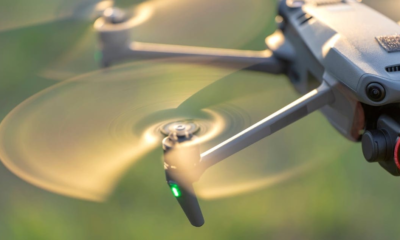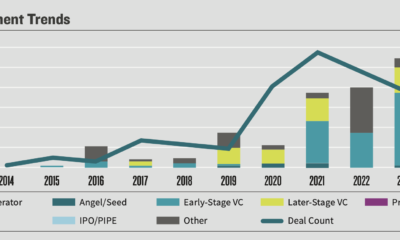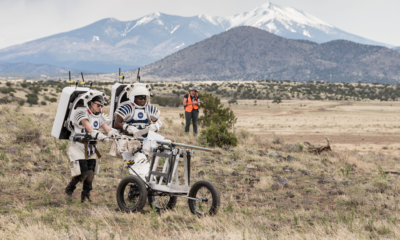Tech News
Reaction to Supreme Court decision in web design case – Spectrum News NY1

Get the best experience and stay connected to your community with our Spectrum News app. Learn More
Continue in Browser
Get hyperlocal forecasts, radar and weather alerts.
Please enter a valid zipcode.
Save
Democrats and LGBTQ+ advocates on Friday condemned a Supreme Court decision siding with a Colorado web designer who argued she should be able to refuse to build wedding websites for same-sex couples. Republicans, meanwhile, praised the ruling as a victory for religious freedom.
In a 6-3 decision, the court ruled that a Colorado law that forbids businesses open to the public from discriminating against gay people violated web designer Lorie Smith’s free-speech rights. Smith, who owns the graphic design firm 303 Creative, argued that working with same-sex couples would go against her Christian faith.
President Joe Biden called the ruling “disappointing” because he said it undermines that “no person should face discrimination simply because of who they are or who they love.”
While the decision only applies to businesses that perform creative services, Biden said he fears it could “invite more discrimination against LGBTQI+ Americans.”
The president added that his administration remains committed to working with federal law enforcement to protect Americans from discrimination based on gender identity or sexual orientation and will work with states to combat attempts to roll back civil rights protections.
“When one group’s dignity and equality are threatened, the promise of our democracy is threatened and we all suffer,” Biden said.
Senate Majority Leader Chuck Schumer, D-N.Y., called the ruling “a giant step backward for human rights and equal protection in the United States.”
“Refusing service based on whom someone loves is just as bigoted and hateful as refusing service because of race or religion,” he said in a statement. “And this is bigotry that the vast majority of Americans find completely unacceptable.”
Kelley Robinson, president of the Human Rights Campaign, an LGBTQ+ advocacy group, called the decision “dangerous” because it will give “some businesses the power to discriminate against people simply because of who we are.”
“People deserve to have commercial spaces that are safe and welcoming,” she said. “This decision continues to affirm how radical and out-of-touch this Court is.”
Rep. Robert Garcia, D-Calif., who is openly gay, called it “a very dark day for our community.”
“This is a devastating ruling for the LGBTQ+ community,” he said in an interview with MSNBC. “We just spent a month celebrating, trying to uplift pride. It’s already a very dark time for this community, where you have attacks happening on our community every day in Congress, in state legislatures. And to have this happen by a true extreme activist court to roll back a key protection against discriminating our community is shameful.
Rep. Bonnie Watson Coleman, D-N.J., also attacked the conservative-majority court while noting the case involved a hypothetical situation. Smith has never designed wedding websites. She argued she wants to expand her business but was concerned about running afoul of the Colorado law.
“This SCOTUS is out of control,” Coleman tweeted. “It’s now taking made up cases in order to push a radical agenda that is out of touch with the vast majority of the American people.”
Rep. Ayanna Pressley, D-Mass., meanwhile, directed a supportive tweet toward the LGBTQ community.
“Despite yet another callous ruling from this extreme Supreme Court, I want our LGBTQ siblings to know: We see you. We love you. We won’t stop fighting for you,” she wrote.
But Kristen Waggoner, president and CEO of the Alliance Defending Freedom, a conservative Christian legal advocacy group, said in a statement the Supreme Court made the right decision. ADF attorneys, including Waggoner, represented Smith in the case.
“The U.S. Supreme Court rightly reaffirmed that the government can’t force Americans to say things they don’t believe,” Waggoner said. “The court reiterated that it’s unconstitutional for the state to eliminate from the public square ideas it dislikes, including the belief that marriage is the union of husband and wife.
“Disagreement isn’t discrimination, and the government can’t mislabel speech as discrimination to censor it,” she added.
Sen. Ted Cruz, R-Texas, said laws should not compel business owners to use their speech in ways that contradict their faith.
“This law wasn’t just a threat to Christians either,” Cruz said in a statement. “Should a Muslim artist be compelled by the government to draw the image of Muhammed? Should Jewish artists be forced to create art that is antisemitic?”
On Twitter, Sen. Lindsey Graham, R-S.C., added, “Participating in commerce does not mean you should have to abandon your faith and individuals should not be compelled, by government, to act counter to their faith.”
Former Vice President Mike Pence, who is running for the Republican presidential nomination in 2024, said in a tweet, “Today Faith Won!”
“Freedom of Religion is the bedrock of our Constitution,” he wrote. “Today’s decision by the Supreme Court is a victory for the Religious Liberty of every American of every faith to live, work and worship according to their faith and conscience!
And former Ambassador to the United Nations Nikki Haley, a Republican who is also running for president, said she’s “glad we have a Supreme Court that respects our Constitution.”
“Unlike in other countries, we don’t force our citizens to express themselves in ways that conflict with their religious beliefs. It’s called the First Amendment,” Haley said in a statement.
Tech News
What Is a Drone? – Built In
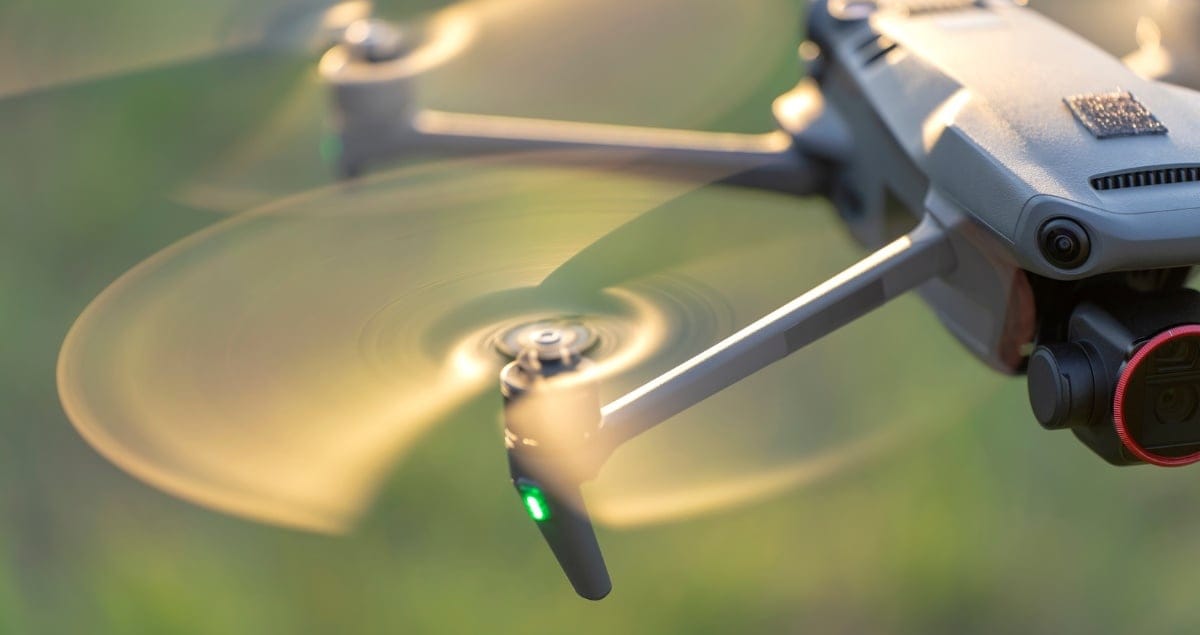
An overview of drone technology.
A drone is an aerial vehicle that receives remote commands from a pilot or relies on software for autonomous flight. Most commercial or consumer-grade drones in use today are propeller-equipped and feature cameras for collecting visual data.
A drone, also called an unmanned aerial vehicle (UAV), is a broad term that refers to an aircraft that operates autonomously or by remote control, with no pilot on board. Sectors like videography, search and rescue, agriculture and transportation have adopted drone technology.
Drones are usually small-or-medium-sized, and these ‘flying robots’ can carry out a wide range of tasks, from stealth military operations to package delivery to aerial photography.
Another name for drones is unmanned aerial vehicle, which is an aircraft that doesn’t require a pilot to be physically onboard. UAVs are often separated into two categories — civilian and military. While civilian UAVs are used for package deliveries and recreation, military drones are used for reconnaissance missions and aerial combat.
Drone technology has become a greater part of everyday life due to its increasing complexity. Here are a few ways drones are used today.
Drones have been a boon for photographers who use UAVs to take expansive aerial photos. There are drones made specifically for photography that provide a new way to photograph some of your favorite city skyline, beach or building from high above. Drones can also be used to record videos for sporting events, films and virtual real estate tours, providing footage from unprecedented vantage points to enhance the viewing experience.
Delivery drones are UAVs used to transport food, packages or goods to your front doorstep. These flying vehicles are known as “last mile” delivery drones because they are used to make deliveries from stores or warehouses close by. Retailers and grocery chains all over the country are turning to drones as a more efficient delivery alternative, instead of relying on delivery drivers with inefficient trucks.
Sometimes it’s not safe enough to send humans into a rescue situation, due to the scope or severity of the disaster. That’s where drones come in. In the case of a capsized boat or drowning individual, officials can throw an autonomous underwater vehicle into the water to assist in the rescue. If there’s an avalanche, drones are deployed to look for those caught in the snow.
Drones have proven to be beneficial to the agriculture industry as well, presenting farmers with several ways to optimize their farms to maximize efficiency and reduce physical strain. Carrying out field surveys, seeding over fields, tracking livestock and estimating crop yield are all made easier through the use of UAVs while saving agriculture professionals valuable time.
Both local law enforcement and military personnel can operate more effectively with the help of drones. Police can use drones to monitor events, record and preserve video evidence of traffic violations and recreate crime scenes through mapping analysis. Meanwhile, military personnel can apply drone technology to track enemy soldiers’ locations, conducting more focused attacks and refining their strategies.
Thanks to lower costs, drones are much more accessible to the average consumer. Anyone can use drones for recreational use, like taking pictures for personal use or practicing flying a drone in a park. In addition, pilots must follow recreational regulations and ensure they have any required certifications before flying a drone for fun.
Drones are a cheaper and more efficient alternative to wildlife conservation. Tracking wildlife populations is nearly impossible with humans on the ground. Having an eye-in-the-sky allows wildlife conservationists to track roaming groups of animals and get a better idea of the health of their species and ecosystems. Drones are also being used for reforestation efforts all over the world.
LiDAR drones come outfitted with LiDAR sensors, which survey landscapes and compile in-depth data that can be used to build 3D models. Drones equipped with LiDAR can present far more accurate data than drones without the technology.
The British and U.S. militaries started using very basic forms of drones in the early 1940s to spy on enemies. Today’s drones are much more advanced than the UAVs of yesteryear, equipped with thermal imaging, laser range finders and even tools to perform airstrikes.
There are several different types of drones, each tailored to the unique demands of different industries. For instance, some people require lightweight drones to hold a camera for photography, while others need robust drones to transport heavy medical supplies.
Multi-rotor drones have several propellers that push wind downward to vertically lift off the ground. Multi-rotor drones are probably the most accessible drones available to the public, since they are easy to control and maneuver during flight. Some multi-rotor drones are ideal for beginner pilots as well, leading to them being an affordable option in the drone market.
Single-rotor drones look like tiny helicopters, with one central propeller attached to its frame. They can be powered by gas or electricity, and are usually used to transport heavier objects, including LiDAR systems, that can be used to survey land, research storms and map erosion caused by global warming.
Fixed-wing drones look like normal airplanes, where the wings provide the lift instead of rotors. Since these drones are usually much larger, they need to take off and land on runways just as airplanes do. Fixed-wing UAVs are used by the military to carry out strikes, by scientists to carry large amounts of equipment and even by nonprofits to deliver food and other goods to areas that are hard to reach.
Fixed-wing hybrid vertical takeoff and landing (VTOL) drones blend the best of fixed-wing and rotary drone models — they can take off and land vertically but then fly horizontally. Companies take advantage of this combination, relying on fixed-wing hybrid VTOL drones to further cut down on delivery times while offering a more versatile flight experience.
Drones companies have responded to the demand for drones in specific sectors as well. Below are some more popular types of drone technology designed for various scenarios:
In order to fly, drones rely on a combination of hardware and software components. They are often equipped with rotors, propellers or fixed wings, sensors and cameras, navigation systems (GPS) and gyroscopes for stability.
Additionally, some of the most critical components of drone technology are its ground control station (GCS), payload and data links.
The global drone market is set to exceed $101 billion by 2032. While lower costs and more clear-cut regulations have made drones a viable option for individuals and businesses, technological innovation is perhaps the main driver behind the spread of drones.
Drones have become much more complex with the help of other technologies. By equipping drones with AI and machine learning, they have achieved greater autonomy and the ability to complete more difficult tasks. Combining drone and IoT technology has also resulted in drones that can share data in real time with other drones and human operators.
With increased intelligence and connectivity, it’s become possible to coordinate the movements of many drones at once. This powers what’s known as ‘drone swarms,’ which are capable of performing light shows as an alternative to fireworks. Enhanced drones can also make a meaningful impact in different industries:
The very developments that have made drones more complex have also created a new set of concerns for the future of drone technology.
Drones being flown in residential areas could capture private information, and the ability to instantly share this data with other drones and human operators poses another risk to data privacy. Even though the FAA has established drone regulations, these are still evolving and may not do enough to encourage ethical and transparent drone usage.
The application of drones in warfare has also ramped up, with the Russia-Ukraine war being labeled the “first full-scale drone war.” Drone weaponry could soon become even more lethal with the introduction of swarm technology. While a single drone can be shot down easily, swarms of drones are far more difficult to defend against.
It’s how drones are used that could turn the technology into a danger for everyday individuals. If regulations don’t do enough to promote the responsible use of drones, the general public may lose trust and reject drone technology as a whole.
The proliferation of drones has led the U.S. government to take a stronger stance on regulating its airspace. These are the FAA regulations that apply to drones in all contexts:
Recreational use means no compensation or professional services are involved. Even if someone is unpaid but offers to take photos for a nonprofit or volunteer organization, this still counts as non-recreational. Besides the typical guidelines, there are a few extra rules those using drones recreationally must adhere to:
Those looking to become certified remote pilots or who want to fly drones commercially must meet a separate set of standards in addition to the general guidelines:
Non-citizens are allowed to fly drones in the U.S. as well, whether they’re merely visiting or establishing business operations. In addition to following U.S. rules for recreational and commercial drone use, international flyers must also abide by these rules:
Put simply, a drone is a flying craft without a pilot onboard, operated through remote control or pre-programmed flight plans.
Tech News
Report: Space tracking technology a top priority, but commercial opportunities are limited – SpaceNews
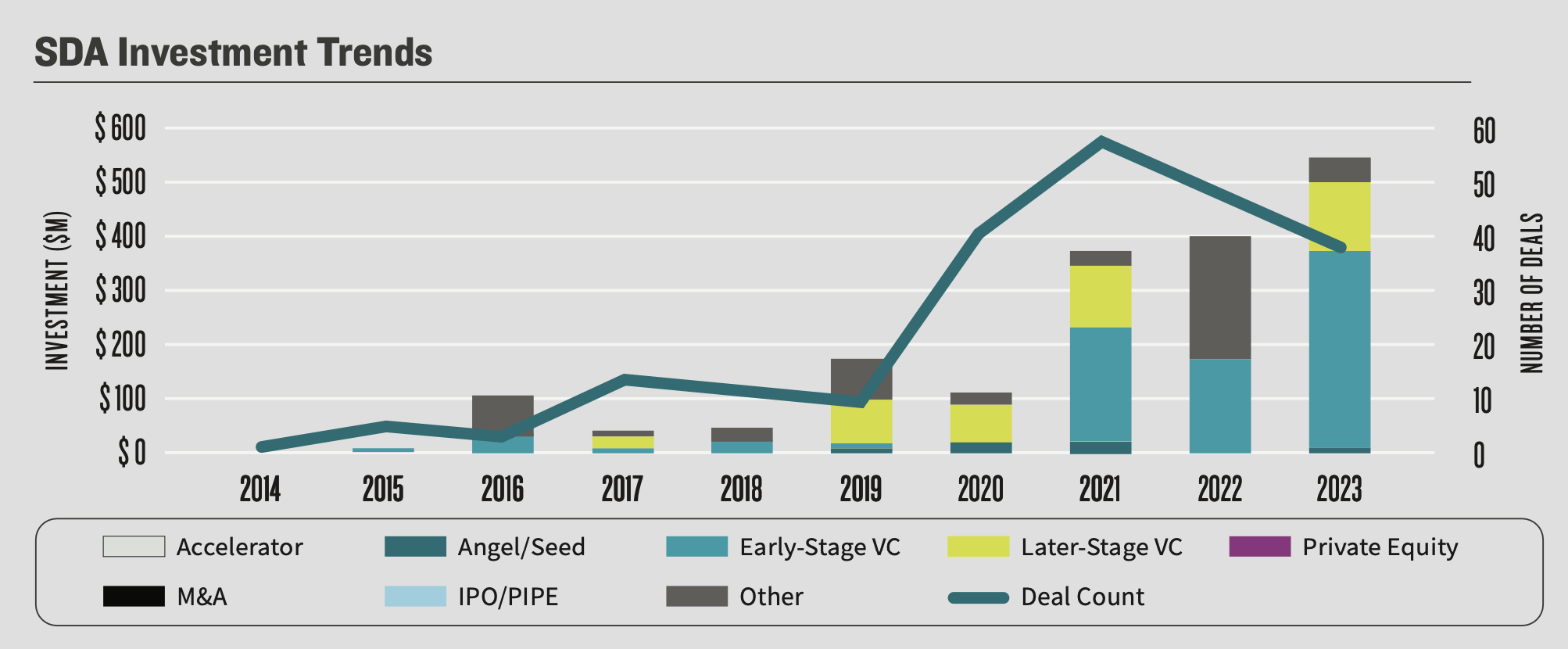
Covering the business and politics of space
Join our newsletter to get the latest military space news every Tuesday by veteran defense journalist Sandra Erwin.
By clicking submit, you agree to share your email address with the site owner to receive the newsletters. You can opt-out at any time.
WASHINGTON — A new report by the consulting firm Booz Allen Hamilton identifies space domain awareness (SDA) as one of the top 10 impactful technologies for national security in the coming years. The report also cautions that the Pentagon’s growing focus on SDA may not translate to a boom for commercial startups in the sector.
SDA technologies are used to detect, track and characterize objects orbiting the Earth in order to prevent collisions, identify threats, and determine the ownership and intent of satellites.
The growing importance of SDA is reflected in the latest budget proposal from the U.S. Space Force, which requested $612 million for fiscal year 2024 — a $120 million increase from two years prior. The funds would go towards ground-based radars, optical telescopes, space-based surveillance systems, commercial data purchases, and data analytics services.
Despite this growth, Booz Allen warns of an uncertain outlook for commercial SDA businesses. Regulatory hurdles, dominance by established defense primes — including Northrop Grumman, L3Harris and Lockheed Martin — and the government’s provision of free public data services all pose challenges.
Companies in the SDA business develop radars, telescopes, maneuverable inspection satellites, and data analysis software.
The report suggests that startups with a diversified business model or offering unique value propositions are more likely to thrive. The Space Force’s recent commercial space strategy emphasizes leveraging commercial technologies for SDA, but the long-term market is likely to sustain only a handful of successful players.
The report mentions Amazon as a major tech player staking a claim in the SDA sector. The company provides computing infrastructure to startups and has built an open marketplace for space data and analytics offerings.
While Amazon’s moves suggest growing interest in SDA from big tech, Booz Allen notes that major venture funds are not very active investors in this segment currently. “Look for defense primes to continue to win major programs of record,” the report says.
There are several reasons why SDA was selected as a top technology focus, the report explains. Monitoring of satellites and space debris has become crucial as concerns grow about potential collisions disrupting critical national security systems and threats from adversaries interfering with U.S. assets in orbit. The military relies heavily on space-based capabilities for navigation, communications, intelligence gathering, and early warning — making SDA a priority to maintain operational safety and superiority over adversaries.
Booz Allen says its report aims to highlight key technological areas that the Department of Defense and intelligence agencies should focus their investment and development efforts on in the near future. The findings were based on public reports, insights from technical experts, client feedback, and the firm’s own venture capital deal pipeline.
Sandra Erwin writes about military space programs, policy, technology and the industry that supports this sector. She has covered the military, the Pentagon, Congress and the defense industry for nearly two decades as editor of NDIA’s National Defense… More by Sandra Erwin
all events >>
Get top stories, military space news and more delivered to your inbox.
Tech News
NASA Tests Technology, Practices Artemis Moonwalks in Arizona Desert – NASA

4 min read
To prepare for exploring the Moon during NASA’s Artemis campaign, the agency is conducting a week-long field test in the lunar-like landscape of San Francisco Volcanic Field near Flagstaff, Arizona to practice moonwalk scenarios.
NASA astronauts Kate Rubins and Andre Douglas are serving as the crewmembers and wearing mockup spacesuit systems as they traverse through the desert, completing a variety of technology demonstrations, hardware checkouts and Artemis science-related operations.
During the test, two integrated teams will work together as they practice end-to-end lunar operations. The field team consists of astronauts, NASA engineers, and field experts in the Arizona desert conducting the simulated moonwalks, while a team of flight controllers and scientists at NASA’s Johnson Space Center in Houston monitor and guide their activities.
“Field tests play a critical role in helping us test all of the systems, hardware, and technology we’ll need to conduct successful lunar operations during Artemis missions,” said Barbara Janoiko, director for the field test at Johnson. “Our engineering and science teams have worked together seamlessly to ensure we are prepared every step of the way for when astronauts step foot on the Moon again.”
The test consists of four simulated moonwalks that follow operations planned for Artemis III and beyond, as well as six advanced technology runs. During the advanced runs, teams will demonstrate technology that may be used for future Artemis missions, such as display and navigation data stream capabilities in the form of a heads-up display using augmented reality or lighting beacons that could help guide crew back to the lander.
Ahead of the field test, the science team at Johnson that was competitively selected and tasked with developing the science objectives for the field test, followed a planning process designed for Artemis missions. Their preparation included generating geologic maps, a list of science questions, and prioritized moonwalk locations for both the primary and back-up “landing sites” for the test.
“During Artemis III, the astronauts will be our science operators on the lunar surface with an entire science team supporting them from here on Earth,” said Cherie Achilles, science officer for the test at NASA’s Goddard Space Flight Center in Greenbelt, Maryland. “This simulation gives us an opportunity to practice conducting geology from afar in real time.”
The test will evaluate gaps and challenges associated with lunar South Pole operations, including data collection and communications between the flight control team and science team in Houston for rapid decision-making protocols.
At the conclusion of each simulated moonwalk, the science team, flight control team, crewmembers, and field experts will come together to discuss and record lessons learned. NASA will take these lessons and apply them to operations for NASA’s Artemis missions, commercial vendor development, and other technology development.
This field test is the fifth in the series conducted by the Joint Extravehicular Activity and Human Surface Mobility Test Team led out of Johnson. This test expands on previous field tests the team has performed and is the highest fidelity Artemis moonwalk mission simulation to date.
NASA uses field tests to simulate missions to prepare for deep space destinations. The Arizona desert has been a training ground for lunar exploration since the Apollo era because of the many similarities to the lunar terrain, including craters, faults and volcanic features.
Through Artemis, NASA will land the first woman, the first person of color, and its first international partner astronaut on the Moon, paving the way for long-term lunar exploration and serving as a steppingstone for astronaut missions to Mars.
Learn more about NASA’s Extravehicular Activity and Human Surface Mobility Program:
https://www.nasa.gov/extravehicular-activity-and-human-surface-mobility/
NASA explores the unknown in air and space, innovates for the benefit of humanity, and inspires the world through discovery.
-

 General Knowledge2 years ago
General Knowledge2 years agoList of Indian States and Capital
-

 General Knowledge2 years ago
General Knowledge2 years agoList Of 400 Famous Books and Authors
-

 Important Days4 years ago
Important Days4 years agoImportant Days of Each Month
-

 General Knowledge2 years ago
General Knowledge2 years agoCountries and their National Sports
-

 General Knowledge3 years ago
General Knowledge3 years agoCountry Capital and Currency
-

 Important Days3 years ago
Important Days3 years agoHoli
-

 General Knowledge2 years ago
General Knowledge2 years agoList of Indian President
-

 General Knowledge2 years ago
General Knowledge2 years agoList of Indian Vice President


